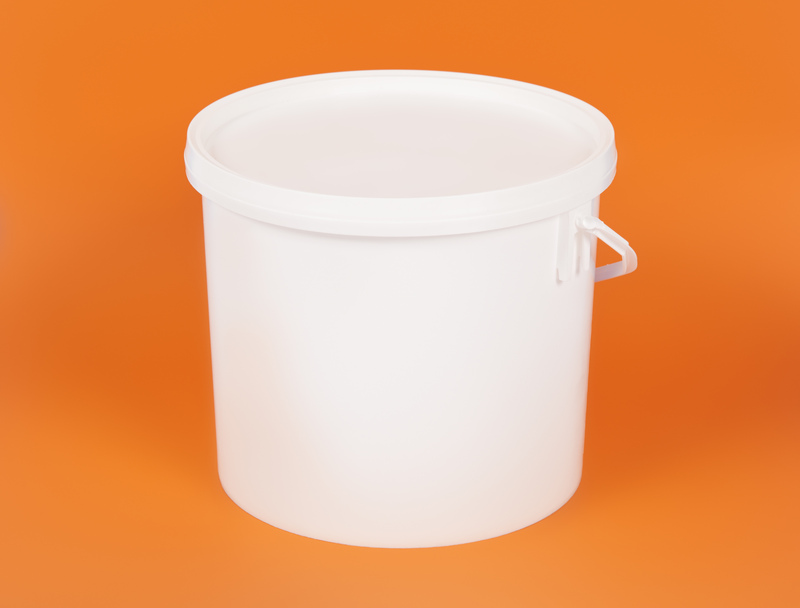Protect Your Couch: Essential Tips for Long-Term Storage
Posted on 23/06/2025
Protect Your Couch: Essential Tips for Long-Term Storage
If you're planning to store your sofa for an extended period, it's crucial to take the right steps to maintain its condition. Providing proper protection during storage will ensure your couch remains comfortable, attractive, and damage-free. In this comprehensive guide, we'll discuss effective strategies to protect your couch for long-term storage, so your furniture looks its best whenever you need it again.

Why Is Proper Couch Storage Important?
Storing your couch incorrectly can lead to a variety of problems, including odors, mold, pests, fabric deterioration, and structural damage. Your couch is not just a piece of furniture; it's an investment. Whether you have a modern sectional, a vintage loveseat, or a classic sleeper sofa, protecting your sofa in storage preserves its value and extends its lifespan.
Common Risks of Improper Sofa Storage
- Mold and mildew growth
- Infestations by pests such as rodents or insects
- Fabric fading and discoloration
- Warping or weakening of the frame
- Unpleasant odors
- Accumulation of dust and dirt
- Mechanical failure in reclining or sleeper mechanisms
With the right couch storage tips, you can avoid these pitfalls and keep your sofa in pristine condition for years.
How to Prepare Your Couch for Long-Term Storage
Preparation is the key to ensuring your couch stays protected while in storage. Before you move your couch into a storage unit or a garage, it's essential to follow these preparatory steps:
1. Clean Your Couch Thoroughly
- Vacuum all surfaces: Use a vacuum with an upholstery attachment to remove dust, crumbs, and pet hair from every crevice.
- Spot-clean stains: Treat any visible stains with a suitable fabric or leather cleaner. Allow the cleaned areas to dry completely before proceeding.
- Deodorize: Sprinkle baking soda on the upholstery, let it sit for 20-30 minutes, then vacuum it away to neutralize odors.
Cleaning is not just about aesthetics. Debris left on the fabric can attract pests, harbor odors, and facilitate mold growth.
2. Disassemble When Possible
- Remove cushions and pillows: Store them separately in sealed, breathable bags.
- Take apart detachable legs and other removable parts: This prevents stress on the joints and makes moving and packing your couch safer and easier.
- Label and bag small parts: Place screws, bolts, and other hardware in marked bags for easy reassembly.
Disassembly reduces the risk of damage during transport and allows for more efficient use of storage space.
3. Wrap Your Couch Carefully
- Use a furniture cover or moving blanket: Avoid plastic wrap directly on fabric, as it can trap moisture and encourage mildew. Use breathable covers designed for upholstery.
- Wrap wooden or metal legs: Use bubble wrap or old towels, then secure with tape (never place tape directly on finished surfaces).
- Seal against dust, but allow air flow: Heavy canvas or cotton sheets are ideal for keeping dust off while preventing moisture buildup.
Proper wrapping is a core technique to keep your sofa safe in storage for the long term.
Choosing the Right Storage Solution
Selecting an appropriate storage space strongly impacts your couch's condition. The environment should minimize risk from humidity, temperature changes, pests, and physical damage.
Should You Use a Climate-Controlled Storage Unit?
For most sofas, a climate-controlled storage unit is highly recommended. Leather, wood, and even synthetic cushions can be adversely affected by extreme temperatures and humidity swings. Mold growth and fabric rot are common in damp, poorly ventilated conditions.
- Temperature: Maintain between 50 - 80?F (10-27?C) for maximum protection.
- Humidity: Ideally, humidity should stay below 60%.
While climate-controlled units are more expensive, they significantly reduce long-term storage risks for your sofa.
Room or Garage Storage - What to Consider
If you store your couch at home in a room or garage, inspect the area first:
- Flooring: Use pallets or a plastic tarp to keep the sofa off bare concrete, which can wick up moisture and cause warping or mold.
- Pest control: Check for signs of rodents or insects, and set traps or repellents as needed.
- Ventilation: Ensure airflow to discourage moisture accumulation.
Best Practices for Storing Your Couch
Positioning Your Couch in Storage
How you position your sofa in storage makes a significant difference. To avoid warping and sagging:
- Always store the couch upright and in its natural position.
- Never stack items on top of the couch; this can deform cushions and frames.
- Leave ample space around the couch for airflow, which helps prevent mildew.
- For sectionals, store each piece separately if possible.
Protecting Against Pests
- Use breathable covers rather than plastic to avoid trapping heat and moisture, which attract insects.
- Place rodent repellents or mothballs near (but not on) your couch to deter pests.
- Inspect the storage area beforehand for cracks, entry points, or nests.
Reducing Odor and Mildew Risk
- Add moisture absorbers like silica gel packets or open boxes of baking soda nearby.
- Open windows periodically or run a dehumidifier if storing at home.
How Long Can You Store a Couch?
With meticulous preparation, you can store your couch for several years without serious risk of deterioration. However, it's a good idea to inspect your stored couch at least once every 4-6 months. Look for any developing issues, such as:
- Mold or mildew smell
- Pest droppings
- Tears or rips in the covering
- Moisture under or around the couch
*Tending to potential problems early greatly increases your chances of a successful, long-term furniture storage experience.*
Special Care for Different Sofa Materials
Each type of couch material requires unique handling for optimal couch storage protection:
Fabric Couches
- Ensure the fabric is completely dry after cleaning.
- Use breathable cotton covers instead of plastic.
- If possible, store cushions separately to avoid compressing the fabric.
Leather Sofas
- Apply leather conditioner before storage to prevent cracks and drying out.
- Avoid direct plastic wrap--use soft blankets instead.
- Keep out of direct sunlight which can cause fading even in storage.
Wooden-Framed Sofas
- Polish the wood and let it dry to protect against moisture.
- Wrap exposed wood with a moisture-resistant, breathable covering.
Sectional Sofas / Recliners
- Store each module or reclining element separately to avoid mechanical stress.
- Lubricate moving parts lightly if specified in the care manual.
Bonus Tips to Ensure Couch Safety in Storage
- Label everything: Bags, hardware, or wrapping tags make reassembling and unwrapping your sofa easier.
- Document your storage: Take photos before and after to make claims if you use a commercial storage provider.
- Avoid strong-smelling substances: Don't store your couch near paints, solvents, or fuel cans, as their fumes can penetrate fabrics.
- Check insurance: Some rental insurance covers furniture in storage--ask your provider or facility manager.

Frequently Asked Questions on Couch Storage
Can I store my couch outdoors?
*It's never recommended to store your couch outdoors unless it is specifically designed for outdoor use.* Exposure to rain, sunlight, and temperature extremes will quickly ruin cushions and frames.
Is it OK to store a sofa on its end?
This is generally a bad idea for most sofas and couches. Storing on the end can cause the frame to warp over time, damaging the structure. Always store your couch in its normal orientation.
How can I prevent my sofa from smelling bad in storage?
Follow the cleaning and deodorizing steps before storage, use moisture absorbers like silica gel, and ensure the storage area is well-ventilated.
Should I wrap my sofa in plastic for storage?
No--avoid wrapping your couch in plastic unless it is a special, breathable plastic designed for furniture. Standard plastic traps moisture, increasing the risk of mold and mildew. Instead, opt for cotton sheets or specialized storage covers.
Conclusion: The Best Ways to Protect Your Couch for Long-Term Storage
Properly storing your couch isn't complicated, but it does require attention to detail. Follow these expert couch storage tips:
- Thoroughly clean and dry your sofa
- Disassemble and wrap components with breathable materials
- Choose a clean, climate-controlled environment
- Store your couch upright with space around it
- Check periodically for issues
With these furniture storage best practices, you can confidently protect your couch during long-term storage and enjoy it for many more years. A little preparation before storage goes a long way to safeguard your investment, comfort, and home decor.



